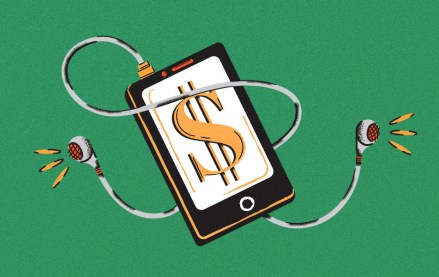Good Housekeeping isn’t exactly looking to become the Hulu of women’s service. But the magazine may have another Web native brand in its sights: Demand Media.
As it plunges forward toward further embracing digital media, its most reverred brand, the 125-year-old Good Housekeeping is undergoing a major Web makeover that will serve as a template for the rest of the magazine company’s sites. The redesign of GoodHousekeeping.com is doubling down on search optimization rather than going for video.
“Video hasn’t been a big element of the new site, frankly,” said Mark Weinberg, Hearst’s vp of programming and product strategy. “We’re investing in it. But it’s not part of the centerpiece.”
That’s a perhaps counterintuitive position for any traditional to take, given the huge growth in online video consumption and advertising — and the overarching industry perception that video is the future of the Web. But video is hardly at Good Housekeeping’s editorial core. Not to mention that it’s expensive, noted Weinberg.
The new site, which has been built in HTML5, is not without video. The magazine does take advantage of its in house kitchen and testing to labs to produce some instructional materials, such as the clip of Best Truffles for Valentine’s Day. But with its emphasis on service, recipes and product reviews, video may actually serve to slow readers down.
“We’re not trying to be Hulu, but we are trying to be helpful,” said Eric Gillin, group director, Hearst digital media.
Being helpful has been a staple of Good Housekeeping since the turn of the century, not the most recent one either. But it’s a space on the Web that has been encroached upon by the likes of search-driven content juggernauts like Demand Media.
And while Hearst officials never mentioned Demand by name, the company would clearly like to use its vast women’s service content pool to gain some of that traction back. When asked whether search engine optimization was a major focus of the redesign, Weinberg said “Yes, in capital letters.”
At launch, GH.com now features over 1,200 product reviews in 11 categories, the start of a growing database that should help the site rank higher on a variety of Google searches. Included are hundreds of reviews that the magazine conducts that never make it to print — essentially allowing Hearst to better monetize content it’s already paid for.
Goodhousekeeping.com is just the start, as Hearst plans to relaunch many of its 28 Web sites over the next year and a half. “This project forms the basic site structure for all of our brands,” said Weinberg,
So does that mean video is not a priority for Hearst magazines? That remains to be seen, and will probably vary by brand. Case in point, yesterday’s original video clip featured on Cosmopolitan.com: “Would You Do Him Outside?”
More in Media

BuzzFeed’s sale of First We Feast seen as a ‘good sign’ for the M&A media market
December 13, 2024
Investor analysts are describing BuzzFeed’s sale of First We Feast for $82.5 million as a good sign for the media M&A market — which itself is an indication of how ugly that market had become.

Media Briefing: Efforts to diversify workforces stall for some publishers
December 12, 2024
A third of the nine publishers that have released workforce demographic reports in the past year haven’t moved the needle on the overall diversity of their companies, according to the annual reports that are tracked by Digiday.

Creators are left wanting more from Spotify’s push to video
December 11, 2024
The streaming service will have to step up certain features in order to shift people toward video podcasts on its app.





